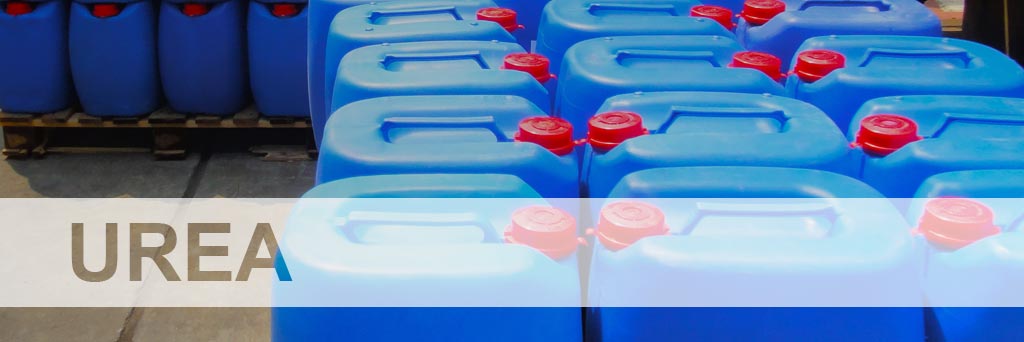Urea or diaminomethanal or carbamide is an organic compound with the chemical formula (NH2)2CO. The molecule has two amine (-NH2) groups joined by a carbonyl (C=O) functional group.
Urea serves an important role in the metabolism of nitrogen-containing compounds by animals and is the main nitrogen-containing substance in the urine of mammals. It is solid, colourless, and odorless (although the ammonia which it gives off in the presence of water, including water vapor in the air, has a strong odor). It is highly soluble in water and non-toxic. Dissolved in water it is neither acidic nor alkaline. The body uses it in many processes, most notably nitrogen excretion. Diaminomethanal is widely used in fertilizers as a convenient source of nitrogen. It is also an important raw material for the chemical industry.
For agriculture uses, more than 90% of world production of Urea is destined for use as a nitrogen-release fertilizer. Urea has the highest nitrogen content of all solid nitrogenous fertilizers in common use. Therefore, it has the lowest transportation costs per unit of nitrogen nutrient.
For chemical industry, Urea is a raw material for the manufacture of many important chemical compounds, such as various plastics; especially the urea-formaldehyde resins, various adhesives; such as urea-formaldehyde or the urea-melamine-formaldehyde used in marine plywood, Potassium cyanate; another industrial feedstock, Urea nitrate; an explosive.
For automobile systems, Urea is used in SNCR and SCR reactions to reduce the NOx pollutants in exhaust gases from combustion from diesel, dual fuel, and lean-burn natural gas engines. The BlueTec system, for example, injects water-based urea solution into the exhaust system. The ammonia produced by the hydrolysis of the Urea reacts with the nitrogen oxide emissions and is converted into nitrogen and water within the catalytic converter.
For laboratory uses, Urea in concentrations up to 10 M is a powerful protein denaturant as it disrupts the noncovalent bonds in the proteins. This property can be exploited to increase the solubility of some proteins. A mixture of Urea and choline chloride is used as a deep eutectic solvent, a type of ionic liquid. Diaminomethanal can in principle serve as a hydrogen source for subsequent power generation in fuel cells. It presents in urine/wastewater can be used directly (though bacteria normally quickly degrade urea.) Producing hydrogen by electrolysis of urea solution occurs at a lower voltage (0.37v) and thus consumes less energy than the electrolysis of water (1.2v).
For medical uses, Urea is used in topical dermatological products to promote rehydration of the skin. Certain types of instant cold packs (or ice packs) contain water and separated urea crystals. Rupturing the internal water bag starts an endothermic reaction and allows the pack to be used to reduce swelling. Urea injection is used to perform abortions. It is the main component of an alternative medicinal treatment referred to as urine therapy. The blood urea nitrogen (BUN) test is a measure of the amount of nitrogen in the blood that comes from Urea. It is used as a marker of renal function.
For safety issues, Urea can be irritating to skin, eyes, and the respiratory tract. Repeated or prolonged contact with Urea in fertilizer form on the skin may cause dermatitis. High concentrations in the blood can be damaging. Ingestion of low concentrations of Urea, such as are found in typical human urine, are not dangerous with additional water ingestion within a reasonable time-frame. |



